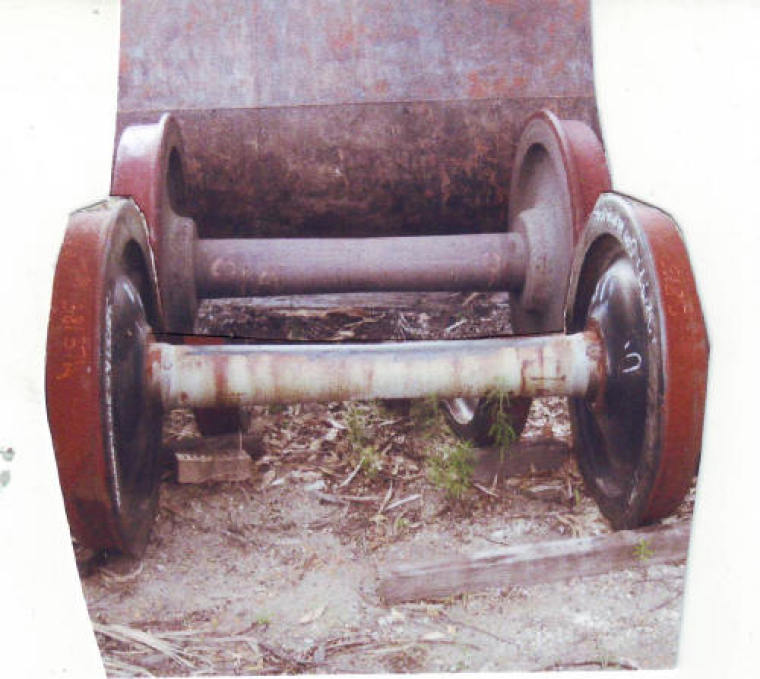
In every centre across Australia where a railway museum exists and the Footplate Padre is travelling nearby on Mission, he will inevitably make a detour to visit, introduce himself to the museum volunteers and personnel.
This is precisely what occurred in Perth when M V Tronson called in and introduced himself and the Museum volunteers were delighted that he made himself known and graciously showed him around.
As an author of sixteen books on railways, Footplate Padre Mark Tronson is conversant with all things railways and so was able to converse knowledgeably with the personnel.
He noted that side by side were sets of stored railway wheels. One set was the original Western Australian 3'6" gauge width, whereas another set was the 4'8" standard gauge set.
Seeing them side by side presented the stark contrast between the gauges. The photograph illustrates this all too clearly.
Western Australia, parts of South Australia, Tasmania and Queensland originally adopted the narrow gauge rail system. There were several reasons for this.
First, there were vast distances to transverse, so when one considers the cost of rail infrastructure, the 3'6" gauge made considerable economic sense. Take for example, the cost of hard wood sleepers and the savings on timber with the reduced gauge width.
Second, all trains of that early era ran no more than fifty miles an hour (80 kilometres an hour) and the 3'6" gauge had always been able to handle that speed. Today, with advanced technology in 'train speed balance', both Western Australian and Queensland high speed passenger trains and Tilt trains at 140 kilometres and hour on the narrow gauge. But this was not available in the late 1800's.
Third, the steam locomotive weight to track ratio (axle loading) which is critical in train running where the weight of the locomotive to the track's technical layout is paramount, was more than adequate and remained so into the diesel era on the narrow gauge.
However times changed, and for fast freight across the continent, let alone passenger convenience, it became imperative that dual gauge track ran from Kalgoorlie to Perth. For forty years now, trains have been able to run from Sydney to Perth without change.
Kalgoorlie was once like Albury, Port Augusta and Brisbane. Every item on a freight wagon had to be transhipped from a standard gauge rail wagon to a broad or narrow gauge wagon. The economic cost became not only prohibitive, but the Australian railway network was an international disgrace.
The standardisation of the railway track gauges across the nation was one of the greatest economic booms to the nation in the latter half of the twentieth century.
As the Footplate Padre, M V Tronson has always thought about the standardisation of the rail gauges a synonym to walking the devotional life in unionism with the Lord.